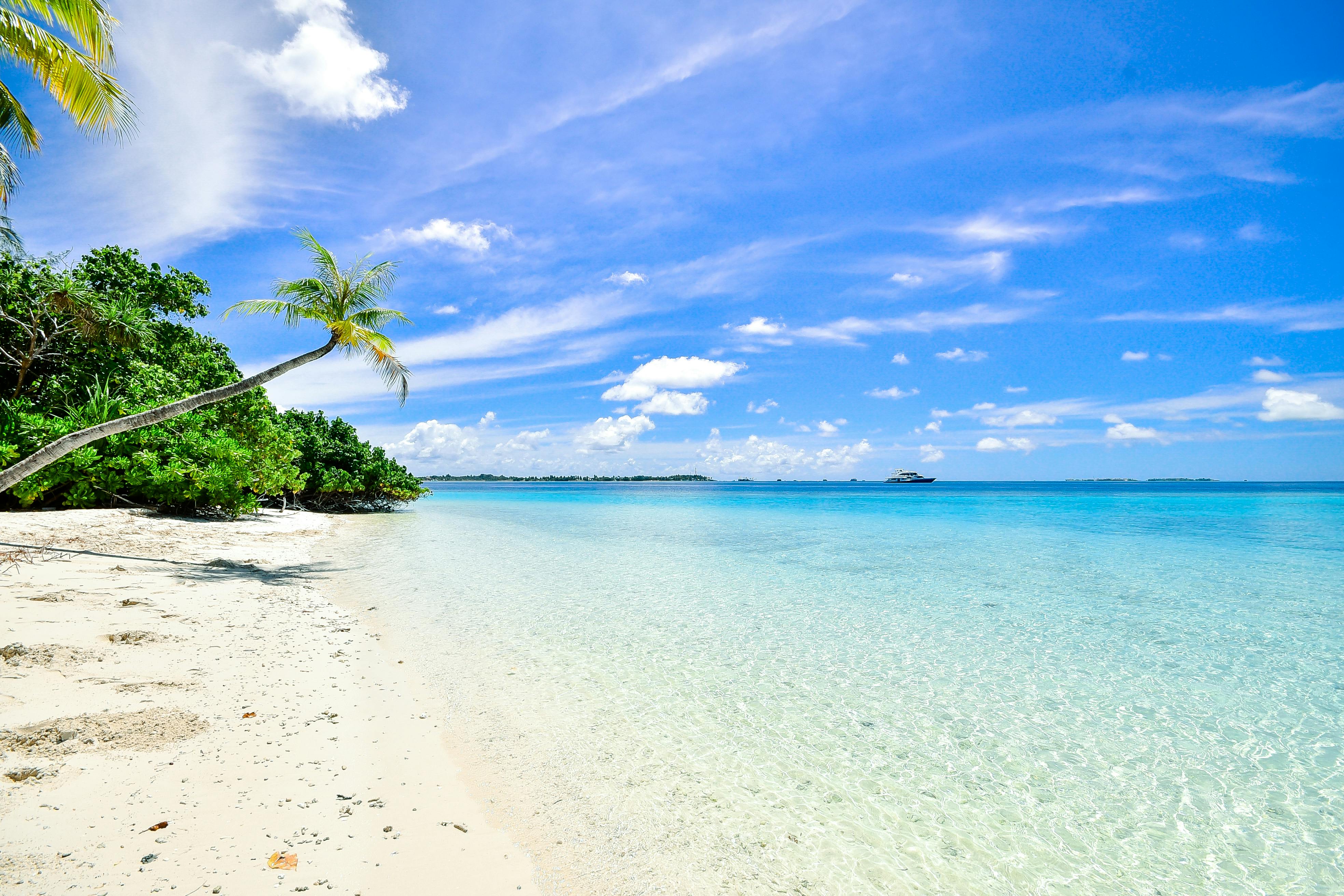Unveiling The Mysterious World Of Beach Worms: Giants Beneath The Sand
Table of Contents
- What Are Beach Worms? Unearthing the Sandy Giants
- Australonuphis: The Giants Beneath the Sand
- Where Do They Call Home? Habitat and Distribution
- The Unsung Heroes of the Shoreline Ecosystem
- Nature's Clean-Up Crew: Diet and Feeding Habits
- Interacting with Beach Worms: Harmless or Hazardous?
- Debunking Myths: The "Creepy" Factor
- The Art of Beach Worming: A Guide for Anglers
- Mastering the Catch: Tips for Success
- Beyond the Worms: Other Beach Dwellers and Safety Considerations
- Conclusion: Appreciating the Unseen Wonders of the Beach
What Are Beach Worms? Unearthing the Sandy Giants
When one thinks of a worm, a small, unassuming creature often comes to mind. However, beach worms challenge this perception entirely. These are not your garden-variety earthworms; they are large polychaete annelids, a diverse group of segmented worms primarily found in marine environments. Known by various common names depending on the region, such as Australian beach worms or bungum worms, these fascinating creatures are a vital, albeit often unseen, part of the coastal ecosystem. Beach worms are characterized by their elongated, segmented bodies, which can range in color but are often described as pinkish or iridescent. What truly sets them apart is their impressive size. While many marine worms are relatively small, beach worms can grow to astonishing lengths, making them some of the largest invertebrates found in sandy intertidal zones. Their bodies are covered with bristles, which aid in their movement through the sand, allowing them to navigate their subterranean world with remarkable speed and agility. Despite their somewhat intimidating appearance, especially when fully extended, beach worms are fundamentally harmless marine annelids. They are not aggressive towards humans and primarily focus on their role as scavengers within their sandy domain.Australonuphis: The Giants Beneath the Sand
Among the various types of beach worms, the genus *Australonuphis* stands out, particularly in Australia, where they are commonly known as Australian beach worms. These are the true giants of the sandy shores, capable of reaching lengths that defy imagination. Some *Australonuphis* species have been documented to grow up to an astounding three metres in length, making them truly colossal marine worms. Imagine strolling along a beautiful stretch of sand, unaware that just beneath your feet, one of these magnificent creatures could be lurking, ready to emerge. Their size is not their only remarkable feature. *Australonuphis* are highly adapted to their sandy habitat, possessing a unique set of physical characteristics that allow them to thrive. They have a distinctive head structure equipped with two fangs, which they primarily use to rip small pieces of flesh from dead animals, their preferred food source. Their ability to sense decaying matter, even from a distance, is finely tuned, allowing them to locate food buried within the sand or washed ashore. The presence of *Australonuphis* on Australia's most populated beaches, often just beneath the sand surface, adds a layer of intriguing biodiversity to these familiar landscapes, making every walk along the shoreline a potential encounter with a hidden giant.Where Do They Call Home? Habitat and Distribution
Beach worms are master burrowers, perfectly adapted to life in the dynamic environment of the intertidal zone. This is the area of the beach that is exposed to the air at low tide and covered by water at high tide. Their preferred habitat is sandy coastal areas, where they construct intricate tubes beneath the surface. These tubes, which can be as long as 15 centimeters, serve as their protective homes, allowing them to move up and down, regulating their position in response to tidal changes and the availability of food. Each of the small holes often visible on sandy mounds at the beach is typically an entrance to a worm’s tube, a testament to their widespread presence. While beach worms are found in various coastal regions globally, *Australonuphis*, the giant Australian beach worms, are predominantly found along Australia's eastern and southeastern coasts. This specific distribution means that many beachgoers in these popular areas are, perhaps unknowingly, sharing the sand with these incredible creatures. Their ability to thrive in such a dynamic and often disturbed environment speaks volumes about their resilience and adaptability. When collecting beach worms for bait, anglers often observe that worms can be found at different positions on the beach – some higher up, closer to the drier sand, and others lower down, closer to the deep water. This distribution can be influenced by factors like food availability and the specific species of worm, with those higher up the beach often being easier targets for novice collectors.The Unsung Heroes of the Shoreline Ecosystem
Beyond their intriguing appearance and impressive size, beach worms play a profoundly important, yet often overlooked, role in the health and vitality of coastal ecosystems. They are nature's silent clean-up crew, diligently working beneath the sand to process organic matter and maintain the ecological balance of the intertidal zone. Their activities contribute significantly to nutrient cycling and the overall health of the beach environment, making them indispensable members of the marine community. One of their primary contributions is through their feeding habits. Beach worms are scavengers, primarily feeding on decaying meat, fish, and seaweeds that wash up on the beach. The strong smell of decaying flesh is a powerful attractant for these worms, drawing them to food sources that would otherwise accumulate and potentially decompose in an unhealthy manner. By consuming these organic materials, they prevent the build-up of putrefying matter, which could lead to anaerobic conditions or attract unwanted pests. Furthermore, their burrowing activities are crucial for aerating the sand. As they move up and down their tubes and create new tunnels, they introduce oxygen into the sediment, which is vital for the survival of other microscopic organisms and for the decomposition processes carried out by bacteria. This constant churning and aeration also help in breaking down organic material and distributing nutrients throughout the sandy substrate, acting as a natural plough for the beach.Nature's Clean-Up Crew: Diet and Feeding Habits
The diet of beach worms is largely composed of detritus – dead organic matter. Their primary food sources are dead fish and birds washed up on the beach. Equipped with two fangs, they are adept at ripping small pieces of flesh from these carcasses. This specialized feeding mechanism allows them to efficiently consume their food, contributing to the rapid breakdown of organic material on the beach. While decaying animal matter is their preferred meal, beach worms are also opportunistic feeders. When little other food is around, they will also feed on seaweed, demonstrating their adaptability to varying food availability in their environment. Their ability to locate food is remarkable. They possess a keen sense of smell, allowing them to detect the scent of decaying flesh from a considerable distance. This sensory capability is what makes them relatively easy to lure to the surface for collection, as anglers often use bait like raw fish or other smelly seafood to attract them. This natural scavenging behavior highlights their critical role in the decomposition process, ensuring that the beach remains clean and healthy. Without these efficient detritivores, coastal areas would quickly become overwhelmed with decaying matter, impacting both the aesthetic appeal and the ecological balance of these vital habitats.Interacting with Beach Worms: Harmless or Hazardous?
For many, the first encounter with a beach worm, especially a large *Australonuphis* emerging from the sand, can be startling, even the stuff of nightmares. Videos of these worms being harvested for bait often go viral, adding to Australia's reputation for scary wildlife. However, it's crucial to understand that despite their appearance, beach worms are harmless marine annelids. They leave humans alone and are not aggressive. Their fangs, while capable of ripping flesh from dead animals, are not a threat to living humans. Any perceived "bite" is more likely a strong suction or a startled reaction from the worm if it's handled improperly. The key to safe interaction is respect and understanding. When walking along the shoreline, you are highly unlikely to even see a beach worm, as they typically remain buried in their tubes. They only emerge when attracted by food or when disturbed. If you do encounter one, perhaps while digging or if an angler is luring them, there is no need for alarm. They are not venomous, nor do they pose a direct threat to human health. The "creepy" factor is purely psychological, stemming from their unusual appearance and rapid movements. Learning about their nature helps to demystify these creatures and replace fear with fascination.Debunking Myths: The "Creepy" Factor
It's easy to see why beach worms, particularly Australia's giant beach worms, look too creepy to be real for some people. Their rapid emergence from the sand, often with a snapping motion, can be unsettling. However, this behavior is a feeding response, not an act of aggression. They are simply trying to grab a piece of the food being offered. The videos showing them being harvested can indeed be "the stuff of nightmares," playing into a primal fear of large, fast-moving invertebrates. Yet, these visual reactions often overshadow the scientific reality: these worms are not interested in humans as prey. They are part of the natural world, fulfilling their ecological niche. Understanding this distinction is vital for safely interacting with them and appreciating their place in the environment, rather than succumbing to unfounded fears.The Art of Beach Worming: A Guide for Anglers
While many might find beach worms intimidating, anglers hold them in high regard. Beach worms are considered prime bait for a variety of fish species, particularly those found in the surf zone. Their natural scent and lively movement in the water make them incredibly attractive to fish, leading to their high demand among recreational fishermen. The process of collecting beach worms, often referred to as "beach worming," is an art form that requires patience, skill, and a good understanding of the worms' behavior. The basic principle of beach worming involves luring the worms to the surface with food. Anglers typically use smelly bait, such as a piece of raw fish (like pilchard or tuna), or even a bag of fish frames, which they drag along the wet sand at the water's edge. The smell of the decaying flesh attracts the worms, causing them to emerge partially from their burrows to investigate. Once a worm's head is visible, the challenge begins. They are fast, slimy, and tricky little buggers to catch, requiring quick reflexes and a gentle but firm grip. Many experienced wormers, like the legendary Bronte (as in "If there's one thing Bronte can do that Alex can't, it's catching beach worms"), have perfected techniques to grab the worm without it retreating back into the sand. This often involves a specific hand position and a swift pull at just the right moment, ensuring the worm is extracted whole and ready for use as bait.Mastering the Catch: Tips for Success
For those looking to try their hand at beach worming, a few tips can significantly improve your chances of success. Firstly, timing is crucial. Beach worms are most active and easiest to catch during low tide, particularly as the tide begins to turn and come in, bringing fresh food sources. The presence of small holes in the sand, often surrounded by a slight mound, indicates a worm's tube. Secondly, choose your bait wisely; strong-smelling, oily fish works best. Thirdly, patience is key. Drag your bait slowly and consistently along the sand, allowing the scent to disperse and attract the worms. When a worm emerges, resist the urge to snatch it immediately. Let it get a good grip on the bait, then slowly apply gentle pressure to its head. As it tries to pull back, maintain steady tension. The worm will eventually stretch, and at the right moment, a swift, decisive pull will bring it out of the sand. It's a skill that takes practice, but the reward of fresh, effective bait is well worth the effort. Learning to target worms that are higher up the beach can also be beneficial for beginners, as they might be in shallower sand and thus easier to extract. This traditional method of bait collection connects anglers directly with the marine environment, fostering a deeper appreciation for the creatures they rely on.Beyond the Worms: Other Beach Dwellers and Safety Considerations
While beach worms themselves are harmless, the beach environment is a complex ecosystem, and it's important to be aware of other potential inhabitants and general safety considerations. Beach sand, for instance, can harbor a number of bacteria that can cause gastroenteritis or stomach infections if ingested. This is why it's always advisable to wash hands thoroughly after handling sand or marine life and before eating. Furthermore, beach environments are home to a vast array of microscopic life. Hundreds of species of microscopic, parasitic roundworms called nematodes, for example, live in our beaches. While most are harmless to humans, this highlights the incredible biodiversity present even in seemingly barren sand. Some marine worms, though not beach worms, can also have bristles that cause irritation or a burning sensation if touched, though this is rare with the common beach worm. This serves as a reminder that while the ocean and its shores are beautiful and inviting, they are wild environments. Exercising caution, observing local wildlife from a respectful distance, and maintaining good hygiene practices are always recommended for a safe and enjoyable beach experience. It's proof that there's still much for us to learn on Earth, even in familiar places like our local beach.Conclusion: Appreciating the Unseen Wonders of the Beach
Beach worms, particularly the impressive *Australonuphis*, are far more than just "creepy" creatures or effective fishing bait. They are integral components of our coastal ecosystems, silently working to decompose organic matter, aerate the sand, and contribute to the overall health of the intertidal zone. Their remarkable adaptations, incredible size, and fascinating behaviors make them a testament to the diverse and often surprising life that thrives just beneath the surface of our planet. The next time you stroll along a sandy beach, take a moment to appreciate the hidden world beneath your feet. The humble beach worm, with its vital ecological role and intriguing existence, reminds us that even the most unassuming creatures can hold immense importance. Share this knowledge with others, spark their curiosity, and perhaps even try your hand at the art of beach worming. By understanding and respecting these marine annelids, we can foster a deeper connection with our natural world and ensure the continued health of our precious coastal environments for generations to come. What other hidden wonders do you think are lurking beneath the sand? Share your thoughts in the comments below!- Alabama Gypsy Rose Jennings
- Arias Agencies Lawsuit
- Ameena Green
- Kimberly Dos Ramos
- Kirstentoosweet Leaked

Beautiful sunset on the beach with palm tree for travel and vacation

Beach Background Photos, Download The BEST Free Beach Background Stock

Full HD Beach Wallpapers - Top Free Full HD Beach Backgrounds